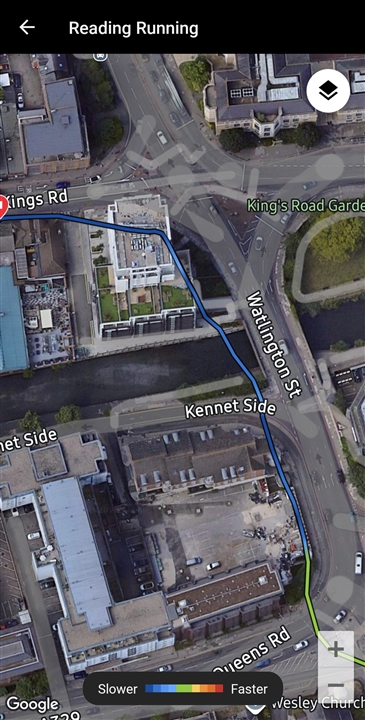

Another run in auto select mode. This is not cherry picking, both pictures from the same run where 80% of the track is off the sidewalks and lanes I have used. One bit shown in the picture is where I ran there and back on the same side walk so E3 can't even be consistent with itself...
I also hike a lot in the mointains and this margin of error is dangerous!!!



